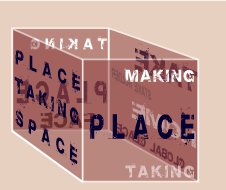Identity | Self-Ethnicization
Self-ethnicization is the way a group comes to understand itself in a foreign culture, with all the restrictions, exclusions, and delineations that that entails.
While some regard the increasing tendency to self-ethnicize as a reaction to a misunderstood model of multicultural integration, it really doesn’t matter whether a behavior is a reaction or an action. Many types of gestures and codes show that adolescent identity can and does form by means of self-ethnicization. In third-generation migrants, that process can be read as a strict negation of prosperity and integration.
The symbolic code in a “black is beautiful” movement consists of street gang codes, a “Kanak sprak” a pattern of delineation or a blurry notion of home country that gives little attention to current life there.
One can demand that intercultural intelligence means not only thinking about other cultures but also thinking about one’s own. Yet instead of such self critical reflection, people all too often ascribe foreign ethnicizations as a form of reflection they consider cool.
Helga Kotthoff describes this mutually determining process in “Overdoing culture. Sketch-Komik, Typeninstilisierung und Identit?tskonstruktion bei Kaya Yanar,” in Doing Culture, ed. Karl H?rning and Julia Reuter (Bielefeld: Transcript-Verlag, 2004).
“Various studies show that code mixing and stylizations of ‘broken German’ are frequently practiced by youths in informal contexts, where it becomes a secondary indexicalization, a method of self-conscious stylization of a mixed cultural identity. But we cannot ignore that adolescents still go through school in Germany and never really master German. For them, deficient German continues to represent a primary indexicalization.”

